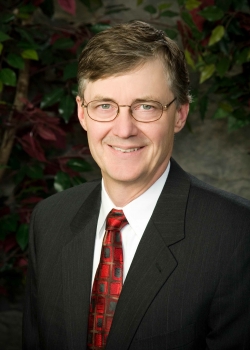 |
iCACGP Member | |
| Research Physicist, Director | ||
| ESRL Chemical Sciences Division | ||
| NOAA, Boulder, CO 80305 USA | ||
 |
iCACGP Member | |
| Research Physicist, Director | ||
| ESRL Chemical Sciences Division | ||
| NOAA, Boulder, CO 80305 USA | ||
PhD - University of Missouri-Rolla
BA - University of Wisconsin-Madison
Memberships:
He is an author of the 2007 climate science assessment of the Intergovernmental Panel on Climate Change.
Awards:He has received the U. S. Department of Commerce Silver and Bronze Medals for Meritorious Federal Service,
and the American Meteorological Society Henry G. Houghton Award.
He is a Fellow of the American Geophysical Union.
He is a Fellow of the Cooperative Institute for Research in Environmental Sciences at the University of Colorado-Boulder.
Before being appointed as CSD Director, Dr. Fahey was a Senior Technical (ST) scientist in NOAA, a position recognizing his many scientific accomplishments, his leadership in research and assessment activities, and his skills in communicating science to the atmospheric science community, stakeholders, decision-makers, and the public.
Research Interests:His principal research interest is the measurements of trace gases and aerosols in the troposphere and lower stratosphere using instruments on board research aircraft.
His interpretative studies have addressed stratospheric ozone depletion, the photochemistry of nitrogen oxides, the formation of nitric acid containing aerosols, and the roles of black carbon, biological aerosol, and water vapor in climate.
Scientific focus areas:Dr. Fahey has served as a Principal Investigator and Project Scientist for a number of airborne sampling missions with NASA's research manned and unmanned aircraft and as a participant in several international scientific assessments of ozone depletion and climate.
Scientific analysis and assessment of issues related the Montreal Protocol on fSubstances that Deplete the Ozone Layer.
Scientific analysis and assessment of the impact of aviation on future climate change.
Airborne measurements of black carbon aerosol in the troposphere and lower stratosphere using the NOAA Single Particle Soot Photometer (SP2).
Water vapor measurements in the upper troposphere and lower stratosphere.
Design and construction of the next generation detectors for atmospheric composition for use on manned and unmanned airborne platforms.
Use of NASA's Global Hawk Unmanned Aircraft System (UAS) for earth science research.
Publications: